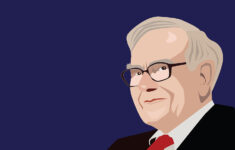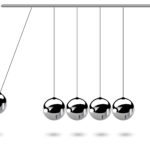Collapsing seven legacy technology systems into a single, integrated one while also winnowing 3,000 specialty insurance products down to 600 isn’t easy. Particularly when the changes impact some 200,000-plus agents who sell your policies.
Executive Summary
Andreas Kleiner, the CEO of American Modern, looks back at the rough terrain his company endured in climbing the steep mountain of an eight-year business transformation, including losing business and frustrating agents. Keeping their eyes on the summit helped move the program ahead, he said, a lesson he keeps in mind as the personal lines specialty carrier embarks on a new journey to conquer Yellowstone—American Modern’s name for a program that will create completely digital interfaces with agents and customers.Still, American Modern Insurance is proving that it is possible to accomplish such a business transformation as an eight-year effort nears completion. “In actual fact, [the] end of August will be our last policy conversion, and it’s when we can close the chapter on it,” Chief Executive Officer Andreas Kleiner reported recently, referring to technology and product transformation that also involved reducing nine carriers down to one admitted carrier.
Kleiner, who first spoke to Carrier Management about the transformation that was already in the works back in 2017, less than a year after he had taken the helm at the Ohio-based specialty personal lines insurance subsidiary of Munich Re, provided an update during a March 2023 interview. (Related article: “‘Digitally Fit Future’ Ahead for American Modern as CEO Kleiner Dives In“) Asked about some of the obstacles that were cleared along the way, he remembered one of the ugliest parts of the journey: having to watch business go to other carriers.
“People simply went shopping somewhere else,” Kleiner said, explaining that reducing 3,000 existing state-product combinations of policy forms “by a factor of five” entailed sending out nonrenewal notices, later followed by a new product offer.
“One of the challenges we encountered early on was that conversion process—nonrenewal and new offer. It was a bloodbath” at the beginning, he said, noting that a course-correction in the transformation process helped to soften the blow later on.
“In some states, we could send a nonrenewal notice and the new offer in one letter. In other states, we needed to send them separately. And what actually happens is if you get a letter from your insurance company, ‘Sorry, we cannot renew you,’ and then you get another one a week later [saying], ‘Here’s a new offer’ for the one that we can’t renew, presumably at that point in time, you may not even look at that new offer anymore. You started going shopping,” he explained. “You don’t even see the new offer coming.”

Over the course of an eight-year transformation effort, American Modern lost 8 percent of our business as a result of this conversion part of the process. While lower than the sky-high defections American Modern experienced out of the gate, the business decline was still a tough pill to swallow. “It was painful. On the other hand, when you have it behind you, it’s absolutely worth it because that’s what makes it so difficult for other carriers” to replicate.
“That’s a steep mountain to climb for our peers,” Kleiner said. “That is the biggest advantage that we see now that we almost have it in the rearview mirror.”
“We hear time and again that we are one of very few, if not the only larger insurance carriers in the U.S. P/C market—large, meaning premium volume of a billion dollars or more—who has no more product and IT legacy issues,” he said, citing the feedback of agents who weren’t always enthralled with the transformation process.
Kleiner, a civil engineer by training, described the steps American Modern took to win the hearts of agents and employees, reported on financial metrics to measure success, offered lessons learned, and described a new multiyear initiative that aims to create an “insurance factory” to interact entirely digitally with American Modern customers and agents.
How It Started
Reviewing the original goals of the business transformation, Kleiner said the key objective was to do away with “a very fragmented legacy IT system landscape” that American Modern and “so many other primary insurance companies have”—basically moving from seven legacy IT systems to one fully integrated Guidewire system.
“Plus, we had lots of different product versions that we always kept alive, and we wanted to, at the same time, bring these [together] to streamline them and consolidate them.”
Explaining the need for product change, he spoke about product-state combinations such as manufactured home-Illinois or collector vehicles-California. “When you have a policyholder who has a product for a long period of time, if you make some significant changes to your product, you would technically nonrenew that policyholder and offer him a new product. So, you had an old version running. Then a new and revised, better version came.”
American Modern maintained both versions. “Added together, we had about 3,000-plus active product versions, which we always needed to keep fresh,” he said, explaining that rate and policy form changes need to be filed with regulators for all of these. “You can imagine if you have 3,000-plus balls in the air, this is extremely complicated. It’s not efficient. It makes you slow.”
The solution was to introduce “a modular product suite,” Kleiner said, using the analogy of a “cafeteria model” to describe this. “If you go to a cafeteria, you can design your own meal. ‘I’ll take that starter and combine it with that main course, but I don’t like the side dish on that main course. I would like to switch it out to something different. I’m interested in that particular dessert.'”
In the past, building add-ons onto one core American Modern insurance product wasn’t possible. “You had a static product. You either take product A or you take product B or product C,” he said, noting that the modular approach allows customers to have highly personalized product offerings. For example, on a manufactured home policy, the insured could add flood coverage, or choose among different roof coverage options (replacement value or actual cash value), different deductible options, and so on.
“It gives you much more flexibility from a customer’s point of view. The customer gets, in the end, a far more bespoke product. The agent has a better selling proposition. And for us, it makes us considerably more efficient and leaner,” he said. “We are keeping our products far fresher than in the past. We regularly review them, regularly file changes… You can use existing resources but far more efficiently, and be so much faster to react on anything that happens in the marketplace.”
Taking Down Mental Barriers for Agents
Asked whether systems and product transformations might be more important in American Modern’s market for specialty residential and specialty recreation products, Kleiner said that taking complexity out of the system is a relevant goal for both standard and specialty carriers.
“A second aspect, which was particularly important for us, is ease of use,” he said, here noting that more critical need for transformation at a specialty carrier in order to respond to a huge number of agents who don’t have reason to interact on a regular basis. “We have more than 200,000 touchpoints,” he said, referring to these agents.
200,000?
“When I saw that figure for the first time, I thought it must be a typo,” Kleiner admitted, referencing a comparative figure below 12,000 for Allstate captive agency channel. “The reason we have so many is that we partner with a lot of the standard carriers and are kind of their extended workbench for those specialty products.”
In addition, independent agents and wholesalers that write auto and homeowners day in and day out, sometimes have the situation where a customer comes to them and has some special needs—a collector vehicle, a yacht, a dock that they want to insure, for example, driving them to partner with specialty carriers.
“So, we are literally having these 200,000-plus agents that are operating on or selling our products. But they are not quoting on our platform as often as they would quote their regular auto or homeowners policy.” That means “ease of use is almost more critical… And we hear often that it’s more important than our price and it’s more important than the product itself.”
Kleiner imagined the plight of an agent who needed a quote for a manufactured home policy prior to the business transformation. “The last time he did that was three weeks ago. And then he thinks, ‘Oh my God, I went on that American Modern platform and all I remember is [that] it was anything but intuitive, and I got hung up here and there and needed to call customer service. And it was a nightmare that goes through that quoting process.'”
“That puts the mental barrier higher,” he said.
“If he does 10 homeowners quotes a day, he knows the ins and outs of the system that he’s working on. For us, doing it once in a blue moon, you need to have that ease of use. Otherwise, you have such a high mental barrier that you will not entice the agent to quote with you.”
In addition to taking steps to smooth out and redesign the conversion process to stem the bleeding of policyholder defections, creating ease of use for agents was the second biggest challenge of the business transformation, according to Kleiner. “We went live originally with a version where we got a lot of noise from our agents of saying, ‘It’s complicated.'”
“We saw that in our figures. We initially thought, ‘New system, technologically advanced, a by far better product offering. We should see new business growing significantly.’ It didn’t happen,” he said, noting that lagging production numbers drove American Modern’s decision to put an intuitive agent portal on top of the technology changes. “You could imagine it’s like a skin that you put on top of your product—a user surface where you put all your intuitiveness in. When you quote now, it’s almost like how you navigate on an Amazon platform. It’s self-explanatory. It’s intuitive.”
After going live with that, business volume soared. “That was a real game-changer for us,” Kleiner reported.
Mapping Out a Transformation—or Two
While a transformation is a daunting task for any carrier, American Modern used a tool known as Kaplan and Norton’s Balanced Scorecard and Strategy to map out the way forward and develop checkpoints along the way.
“I would describe myself as almost an ambassador for balanced scorecards,” said Kleiner, who referenced the scorecards as a way for leaders to define a strategy and set forth a path for success in an article he authored for Carrier Management in 2020. (“CEO Viewpoint: American Modern’s Kleiner Offers 6 Resiliency Tips for Any Leader“) In a nutshell, the scorecard measures progress with reference to user-defined financial, customer, internal process and growth metrics. (See related article, “How to Be Strategy-Focused: The Balanced Scorecard Explained” for more details)
“On the Munich Re level, we introduced balanced scorecards around the year 2000 or so. At that time, I was in Singapore. I was in charge of rolling it out, of driving strategy for the organization… I just completely fell in love with it,” said Kleiner. “Ever since then, I’m extremely diligent wherever I am to use balanced scorecards as a tool on one hand to develop your strategy, and secondly, to track strategy execution.”
“I also think if I have a choice between having an excellent strategy and a mediocre execution or having a mediocre strategy and an excellent execution, I would go for the latter. It’s a perfect tool to track your execution and it’s a perfect tool to communicate your strategy and make sure that you get your whole organization aligned to your strategy.”
Over the course of the transformation, American Modern recognized the systems and product changes would have great impact on employees and customers. “We had a dedicated change management function to cover both,” Kleiner reported.
“On the external component, obviously when you roll out a new product and a new IT platform and you have some 200-plus thousand agents, you better make sure that they know what’s coming their way. Otherwise, you frustrate them and you lose them,” he said. Here, “the change management was particularly focused around communication, communication, communication—telling them what’s coming, making sure that we give them the necessary training, do a lot of handholding also when they run into trouble with a new system… We had significant teams available to give additional customer support and to be very proactive in communication as well as training.”
Internally, the same applied. “First of all, business transformation is not an IT project, but ultimately it’s a business project. So, you need to have business owners who drive it,” he said. “Then we needed to make sure that we could envisage how certain jobs are changing—making sure that those future changes are taken into consideration now,” he said. “We refer to it as strategic workforce planning.”
With the systems integration and product updates of the business transformation nearly done, American Modern is embarking on another transformation—a digital transformation to create completely digital interfaces with agents and customers. (Related sidebar, “What’s Next at American Modern: Conquering Yellowstone”) Kleiner said that strategic workforce planning is taking place for the digital transformation, known as the “Yellowstone Program,” as well.
“As we do our digital transformation, we try to be as proactive as we can be in identifying jobs that may either disappear, or where the profile is changing, and new jobs that are emerging based on those technological investments,” Kleiner said. “We almost have an everlasting circle where technological investments lead to certain skillset changes.”
Questions arise: “Do we need to upskill our people? [Or when] certain positions become vacant, we don’t just backfill. [Instead, we stop to ask], ‘How is that role going to emerge? Is that a good opportunity now to recruit for the future?'”
“A lot happens in terms of how we replace staff, how we upskill people, and how we help them, for instance, from a role that will get automated to transition to a new role. Upskilling is a key component,” he said, reiterating that as the circle of change gets translated into the organizational design of American Modern, “strategic workforce planning runs in perpetuity in the background.”
Affirming that American Modern “didn’t have to lay off a single person” during the course of the business transformation, he noted that the carrier started using robotic process automation about the same time as we started with business transformation—launching pilots in 2017 and scaling up the effort in 2018. “We started off in producer management—managing all the different agents, when an agent gets a new product authority or goes into a new state… Then we ventured into endorsement to policy. We did it in accounting. We have parts of it in claims. We have parts of it in underwriting. So, it’s across several parts of the value chain for us.”
“And that has become a real game-changer for us. If I look at 2022, we had more than 2 million transactions that were processed by bots, and it’s more than 60 processes, which are now fully automated. That was work that was previously done by more than 90 people.”
“Those 90 people didn’t leave the organization,” he said, reporting that while some exited over time—”at some stage you have natural turnover”—for many others, “we literally repurposed roles and changed profiles, upskilled our people, and moved them into new roles so there wasn’t a single layoff during that journey.”
The Story in Numbers: Growth and Profit
Back in 2016, when Kleiner moved from being a member of the board of management of Ergo (the primary insurance operation of Munich Re Group in Europe) to the middle of the United States to head up American Modern in Amelia, Ohio, the Munich Re board asked him to develop a 10-year business plan of premium and profit projections. “Now if I look at 2022, when we closed 2022, we were about $500 million ahead with our premium volume compared to the original business plan,” putting the company just a little bit shy of $2 billion in premium volume. “A significant part of that additional growth that we experienced, we can tie directly back to business transformation,” he asserted.
In addition, American Modern’s expense ratio has improved from roughly 19 percent to 15 percent now, Kleiner said, noting the sizable improvement and favorable comparison to the overall U.S. P/C market. And, net promoter scores from agents and policyholders have shown “constant improvement year by year by year over the last couple of years, which we think has a lot of drivers. But one of them definitely is also the ease of use that we created, and the intuitiveness that we created with business transformation, with that [single] Guidewire platform, as well as having superior products.”
A final overriding measure of success is an overall combined ratio some 8-10 points better than the market, Kleiner said, after reviewing homeowners combined ratios averaging 108 across the industry in 2022. “It’s not a one-to-one match because we have specialty products. [But] 2022 has been a pretty ugly year for the whole market,” with the industry experiencing a 4.5-point deterioration in the average combined ratio compared to 2021.
While even American Modern’s result “was admittedly not where we wanted to be. We wanted to be better,” Kleiner said the company didn’t see the same deterioration in the loss ratio that other homeowners players experienced as a result of inflationary trends. “The reason for us is certainly that we are a leaner organization, and we are more agile and faster in terms of, for instance, filing for new rates.”
While all carriers have the lag of a regulatory approval process, “at least we could react much faster than a number of our peers… Obviously it’s my personal and presumably subjective opinion, but I think this is what saved the day for us in 2022 in terms of profit performance. You can tie it to some extent back to business transformation and a lot of the digital transformation that we are currently pursuing,” he said.
Don’t Give Up
As American Modern moves ahead to conquer Yellowstone—to create an entirely digitally enabled company—Kleiner reflects on the lessons of the prior transformation. “What was really a learning [experience] was that with the business transformation, we stood steadfast. We had the vision and we didn’t give up.”
“The ability to execute and to have perseverance was critically important. And let’s be honest, it was a painful process while we were in it. There were moments where we were really scratching our heads and said, ‘Should we give up on it?’ And life would be so much easier if we don’t go through all that pain.”
“But in the end, now having it almost completed, it is wonderful,” he said, expressing a sigh of relief. “It’s just nice to have it behind you and know that it is something which really created a customer value proposition in the marketplace that isn’t easy to replicate.”
“In the end, I would say it was worth the effort.”
Asked whether personal attributes helped him lead the company over the rough terrain, Kleiner credited his team’s ability “to just get things executed” as the most vital piece of the success story.
“If you’re an athlete, what keeps you motivated when you go through all your hard training is trying to envision yourself winning a medal at the Olympics and standing up there and receiving your medal. That makes up for all the hard work and the pain that you go through when you prepare for it. And it was presumably for us also. We had a clear target picture—this is the vision, what it will be, if we go through with it—to always pull up in moments of doubt,” he added.
(Related articles: “How to Be Strategy-Focused: The Balanced Scorecard Explained” and What’s Next at American Modern: Conquering Yellowstone“)





















 Self-Driving Cars Could Lead to Changes in Traffic Lights
Self-Driving Cars Could Lead to Changes in Traffic Lights  Buffett’s Berkshire Reveals $6.7B Stake in Insurer Chubb
Buffett’s Berkshire Reveals $6.7B Stake in Insurer Chubb  Carriers Focus on Renewal Retention as Auto Insurance Buyers Shop
Carriers Focus on Renewal Retention as Auto Insurance Buyers Shop  Survey Offers Tips on Ways to Assist Homeowners in Procuring Adequate Coverage
Survey Offers Tips on Ways to Assist Homeowners in Procuring Adequate Coverage 






